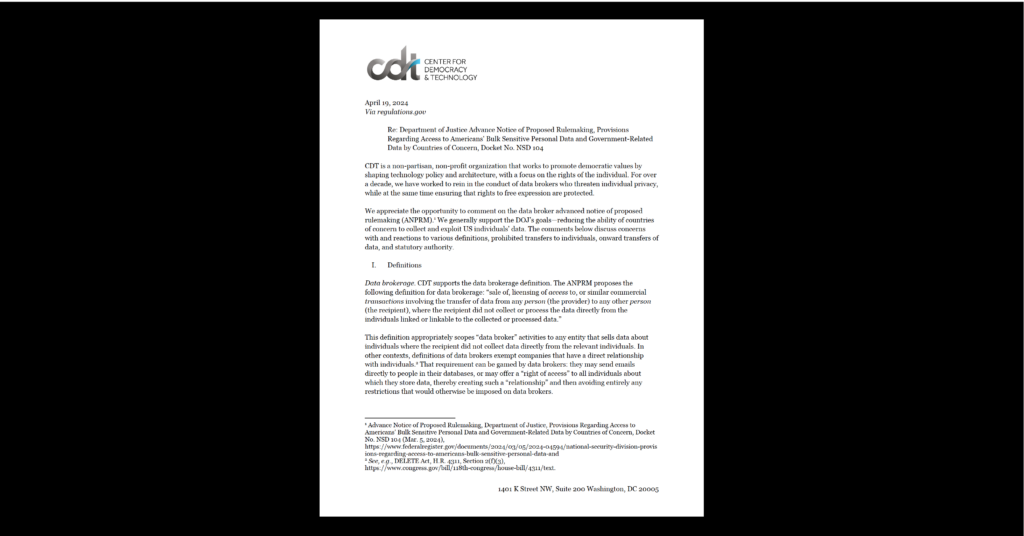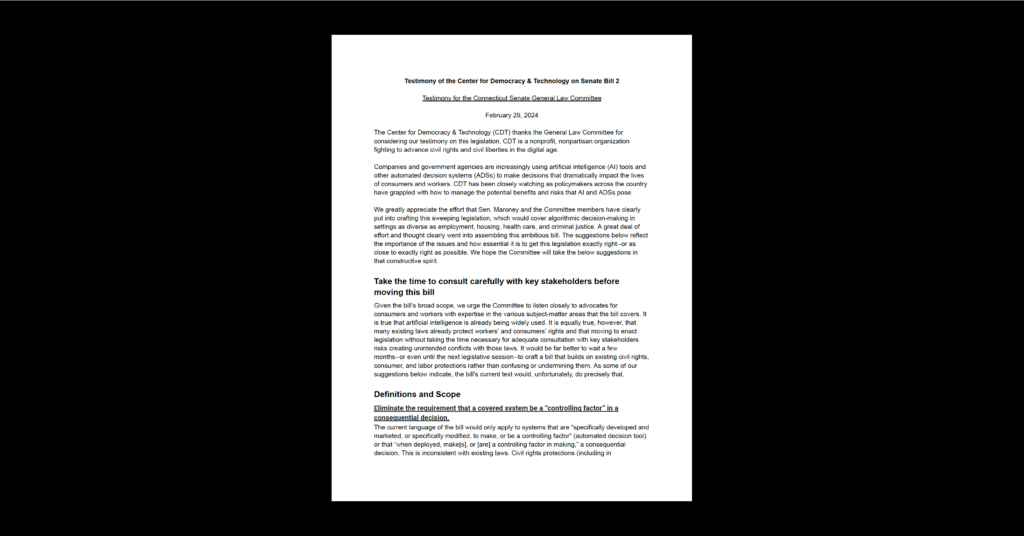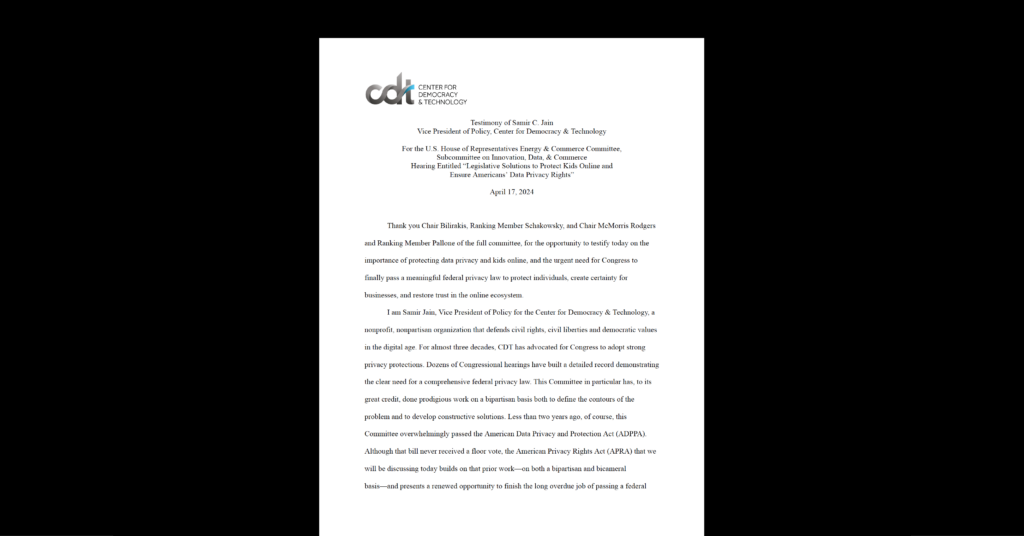(Digital) Sign of the Times
Recently, I attended the Personal Democracy Forum in New York City and, it being New York, I took a lot of cabs. While distances and speeds of trips varied, the one constant was each cab having a television monitor in the backseat, which in addition to displaying news and city information ran a constant carousel of product advertisements. After taking three separate trips that involved me seeing the same product advertisement for a men’s suit sale in all three cabs (after all, I was dressed in business attire) I began to wonder if this could be chalked up to coincidence or just another day in the era of digital signage. I asked myself: “Do these ads have eyes?”
As noted by CDT’s Harley Geiger in a recent op-ed for CBS, today’s marketers are creating signs that can display targeted ads based on information extracted from hidden facial-recognition cameras. While marketing and advertising companies tout the desire to constantly create the most unique experience possible for a viewer, this type of technology is growing and begs the question “What are you doing with my face after I’ve already seen the ad?” Or more correctly, the digital image of my face. Concerns surround how long this information is stored and what is done with it after ads are targeted and aired.
CDT has written before about the privacy concerns associated with these new technologies and how such devices have outpaced what little privacy protections are currently in place. Since digital signage is a relatively new (though rapidly expanding) form of advertising, now is the time to enact legislation that helps consumer protection laws get up to speed with new technologies.
Consumers should have a choice over what information of theirs is shared, sold and analyzed by third parties. Building in new standards now, while the digital signage practice is still new, based on core privacy principles will be easier than trying to pass legislation years from now when companies are too invested in the practice to be able to make appropriate changes.


